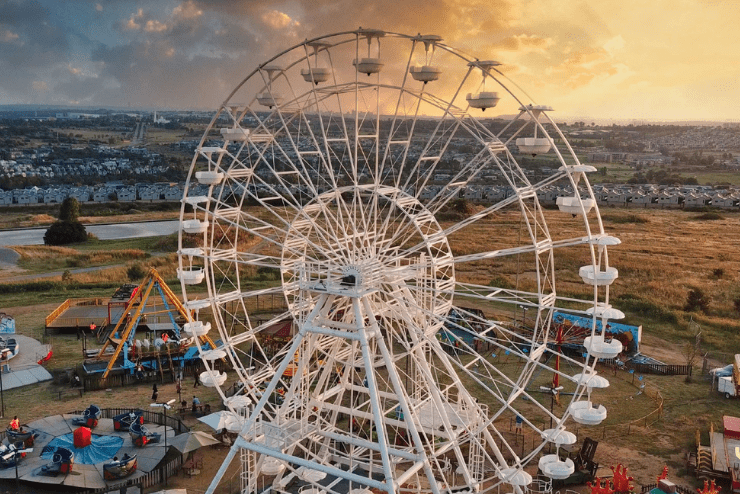Johannesburg North Attractions Fundamentals Explained
Johannesburg North Attractions Fundamentals Explained
Blog Article
More About Johannesburg North Attractions
Table of ContentsThe Main Principles Of Johannesburg North Attractions The Basic Principles Of Johannesburg North Attractions Johannesburg North Attractions Fundamentals Explained6 Simple Techniques For Johannesburg North AttractionsThe 9-Second Trick For Johannesburg North AttractionsUnknown Facts About Johannesburg North Attractions
The city expanded on the side of the Witwatersrand Main Reef, a subterranean stratum of gold-bearing quartz-silica conglomerate that arcs for hundreds of miles beneath the Highveld - Johannesburg North attractions. Many of the gold mines in the city ceased operation in the 1970s, yet in its day the Witwatersrand gold industry accounted for even more than 40 percent of the globe's annual gold production.Johannesburg has a temperate climate. Summer season temperature levels average concerning 75 F (24 C); winter temperature levels balance regarding 55 F (13 C) and only occasionally dip below freezing. The city delights in concerning eight hours of sunlight daily in both winter and summer season. Rain standards regarding 28 inches (700 millimetres) per annum, however the complete differs substantially from year to year.
What rainfall the city receives drops virtually specifically in the summer months, commonly in amazing late-afternoon electric storms., where numerous locals still count on coal for fuel.

3 Simple Techniques For Johannesburg North Attractions
The equilibrium of the city is inhabited by whites. Accommodation varies in character and high quality.
Physical growth, although rather restricted by transportation, continued promptly as migration to South Africa, and Johannesburg particularly, raised drastically. This problem was addressed in the 1930s when the automobile was introduced in mass manufacturing to South Africa. Automobiles were, essentially, confined to the wealthy, and allowed them to relocate to the north of the city and commute right into the centre.
Most bad suburbs were combined, with poor blacks and whites cohabiting, although the affluent residential areas were normally scheduled for whites. This transformed with the political election of the National Party in the 1948 political elections, who started to formalise the system recognized as racism. Discrimination officially assigned which residential areas each race could reside in under the Group Locations Act.
The previous system of eleven phoned number areas was reorganised in 2006. Marshalltown, as seen from the top of the Carlton Centre. The M1 and M2 run behind the structures, and the southerly residential areas prolong past the freeway limit. The internal city of Johannesburg lies within the city's Region F. The approximated population of the area is 200,000, [] The number of individuals living in the internal city on an informal basis is unknown, as many are prohibited immigrants. The majority of higher-income locals and white individuals have relocated to the northern suburbs and have been changed by lower-income black individuals. The unemployment, education and learning, and age profiles of the location are all unidentified, because of the from this source trouble of obtaining reliable details regarding the area.
A Biased View of Johannesburg North Attractions
Centred on the CBD, the area consists of the suburban areas of Yeoville, Bellevue, Troyeville, Jeppestown, and Berea to the east. To the west it infects Pageview (Johannesburg North attractions) and Fordsburg. There are tiny industrial parks to the south, such as City West-Denver and Benrose. Around 800,000 travelers go through the internal city each day, and it operates as a regional buying node for site visitors from the southerly suburbs. Yeoville and Bellevue have a mix of house buildings and solitary household devices on small whole lots. The area lies on a mountainous divide that runs from eastern to west. The most obvious geographic feature is Observatory Ridge, which is called for the huge observatory situated on it. The entertainment rooms are no more utilized, because of protection issues.

A Biased View of Johannesburg North Attractions
R. Tambo International Airport). The eastern suburbs are several of the oldest areas of Johannesburg, there are large areas of Jewish and various other European histories, most of the population is English talking. There are three fairway as well as a number of protected ridges with viewsites. There are numerous strong and up-market enjoyment and buying areas in the eastern such as the Eastgate Purchasing Centre and the Greenstone shopping center.
Originally built to house male migrant workers, numerous have actually been enhanced as dwellings for couples and families. The suburban area was not historically allowed to create work centres within the area, so almost all of its locals are travelers to various other parts of the city.
Johannesburg North Attractions Fundamentals Explained
The residential areas in the northern suburban areas are mainly official, with no considerable areas of casual real estate, or housing that does not have an irreversible framework. This is a well established location, there is a trend of land usage change from why not try here household to commercial, especially along main arterial roadways and around recognized nodes.
The area is well connected to roadway networks, particularly along the north-south axis created by the M1 and N1. Roads to the east and west are much less well developed, as there are no freeways travelling because direction. Towards the north boundary of the city, the thickness of growth decreases, leaving big locations of undeveloped land around these details Midrand.
The Best Strategy To Use For Johannesburg North Attractions
The initial suburb to the north of the central city is Parktown, which lies on a hill neglecting the internal city and Hillbrow. It has numerous affluent residents and Edwardian-design mansions, along with the Education and learning and Medical campuses of the College of the Witwatersrand. The large concrete Charlotte Maxeke Johannesburg Academic Healthcare Facility dominates the sky line of Parktown.
Report this page